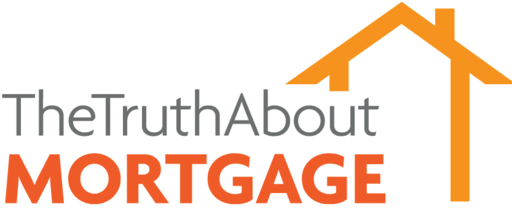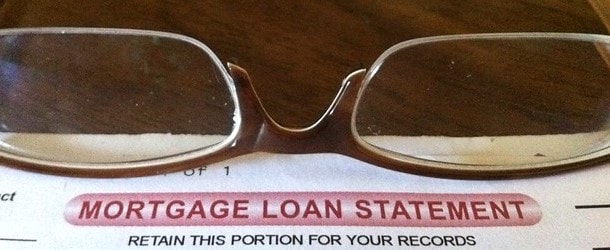In a bid to help more gig workers, freelancers, and self-employed borrowers tap into their equity, mortgage lender Better has launched a new “Bank Statement Home Equity Line of Credit” (HELOC) program.
As the name implies, you can now get approved for a HELOC with the nonbank lender simply by providing a series of bank statements.
And apparently it’s a much-needed product because the company claims some 6,000 customers who were denied in the past could now be approved.
In lieu of furnishing tax returns, P&Ls, W-2s, or paystubs, applicants can provide 12 or 24 months of bank statements to verify their income.
While Better is promoting easier access to credit, there are questions about non-traditional lending making a return, particularly as the economy shows signs of stress.
How Better’s Bank Statement HELOC Works
- Utilizes 12 or 24 months in bank statements in lieu of income documentation
- No need to provide tax returns, W-2s, P&Ls, or paystubs for approval
- Works just like their core HELOC offering (can use to pay off existing debt or for new purchases)
- But may be restricted to a lower loan amount and interest rate could be higher as well
Before we get into whether this is a good idea (or bad), let’s talk about how the product works.
A HELOC is typically a second mortgage taken out behind an existing first mortgage to gain access to cash.
Better pointed out recently that the average American homeowner is sitting on $200,000 in untapped home equity.
At the same time, many homeowners have lots of non-housing debt, whether it’s credit card debt, personal loans, or other installment debt.
The company’s Tinman® platform can identify a customer’s existing debts and monthly payments and instantaneously determine how they can consolidate (and lower the payment) with HELOC funds.
Better says it has unlocked an average of $1,120 in monthly savings for the nearly 50% of its home equity customers who chose to consolidate debt.
And Better customers who used HELOC funds for debt consolidation improved their credit scores anywhere from 25 to 60 points, with an average 37-point improvement and larger lifts in lower cohorts.
So it’s pretty popular as a debt consolidation tool, though HELOCs also have other uses, such as to pay for home renovations or to purchase any number of things, even provide a down payment on another house.
Same HELOC, Less Paperwork
Anyway, the Bank Statement HELOC works just like Better’s standard HELOC, except you don’t need to provide as much paperwork.
In fact, you could get approved with as little as 12 months of bank statements.
As pointed out earlier, this can appeal to small business owners, freelancers, independent contractors, and gig economy workers with uneven incomes.
It can also be a good option for those with “significant business expenses that reduce taxable income,” or borrowers who have seen recent upticks in earnings that have yet to reflect on a filed tax return.
Simply put, the Bank Statement HELOC provides flexibility when it comes to qualifying and is easier to underwrite.
Once you provide bank statements, their AI platform instantly analyzes the data to determine useable income and profit and loss trends.
It provides a near-instant underwriting decision, similar to their core HELOC product, and does not require a physical appraisal or title insurance for loan amounts up to $400,000.
However, where it differs is there might be more restrictions in terms of maximum CLTVs.
For example, if you can borrow up to 90% of the property value with their traditional HELOC, you might be capped at 80% instead when using bank statements to qualify.
This provides a buffer in exchange for providing less paperwork. To that same end, you may also receive a higher HELOC rate, which will be dictated by a higher margin since all HELOCs are tied to the same prime rate.
Does a Bank Statement HELOC Bring More Risk to the Housing Market?
Now to address whether we’re letting credit get too loose at a time when Americans continue to rack up debt (and face job losses due to things like AI).
I’ll say that bank statement HELOCs have grown a lot in popularity recently, and are typically offered via non-QM lenders.
So it is somewhat surprising to see Better offer them since they’re more of a mainstream lender.
But my assumption is they do have checks in place to ensure it’s not the Wild West all over again.
As stated earlier, that means lower maximum CLTVs to ensure the homeowner has an equity buffer in case things go sideways.
And even though it’s reduced-doc underwriting, it’s not no-doc underwriting. They still document income and assets via the bank statements, along with verification of credit history to determine eligibility.
It certainly represents higher-risk lending, but it’s also a far cry from what we saw in the early 2000s when you could literally get a mortgage with a credit score and nothing else, all while putting nothing down.
- No, Fannie Mae and Freddie Mac Haven’t Abandoned Credit Scores - November 13, 2025
- Portable Mortgages Don’t Work in the United States - November 12, 2025
- A Small Rate Buydown Makes the 30-Year Fixed Cheaper Than a 50-Year Mortgage - November 11, 2025

